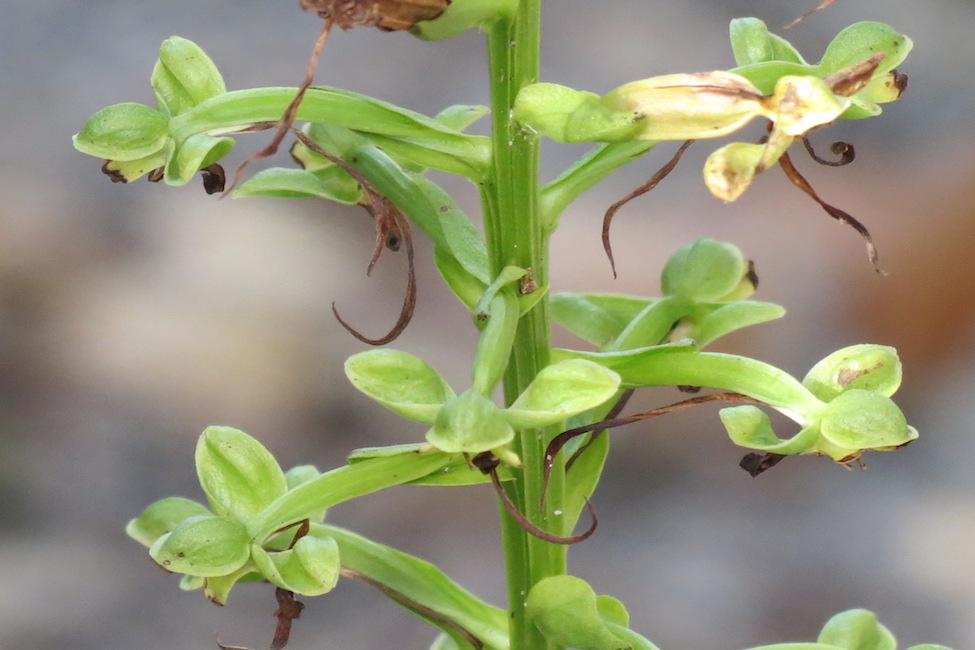Native Orchid Discovered at FAU’s Boca Raton Campus
The Toothed Rein Orchid, native only to central and south Florida within the United States, has been discovered along the Tortuga Trail at Florida Atlantic University’s Boca Raton campus.

Detail of the Toothed Rein Orchid.
The Toothed Rein Orchid, native only to central and south Florida within the United States, has been discovered along the Tortuga Trail at Florida Atlantic University’s Boca Raton campus. Professor Yash Bhagwanji, Ph.D., spotted the terrestrial orchidaceae while on a field trip with his class, “Exploring Natural Habitats as a Curriculum for Young Children.” According to Jasmine Coyle, orchid lab coordinator at FAU Pine Jog Environmental Education Center, native orchids are rarely tracked on FAU campuses and this ground orchid represents an exciting find.
“When I first saw the plant I was quite sure it was an orchid with stem and roots extending into the ground,” said Bhagwanji. “It had sepal and petals characteristic of orchids.”
Internet investigation and consultation with Prem Subrahmanyam, a well-known expert on Florida native orchids, confirmed the find to be Habenaria floribunda, also known as Habenaria odontopetala. This species, also found in the West Indies, Central America and Mexico, produces five to 12 glossy bright green leaves with light green petals and lip. Flowering is mostly in the fall, beginning around September in north Florida and extending into February in the southern portions of the state. The flowers have a distinctive odor that seems to be most noticeable around dusk.
“It is such a mystery to ponder how such microscopic seeds of the odontopetala could have found their way here to our conservation area, to a niche with just the right conditions for it to germinate and grow,” said Bhagwanji. “I believe spotting the orchid is a rare occurrence due to diminishing, small, and scattered wild and natural areas, and is particularly intriguing to find it on the Tortuga Trail which is surrounded by urban development.”
Bhagwanji noted that this discovery points to the very important value and need for the preservation of such scrub and flat pinewood habitats. He feels that the disconnection between nature and human experience over the past several generations has likely eroded a sense of environmental awe and the need to protect the natural world.
“I hope through university classes such as this, our teachers, families and leaders will be inspired to bring about changes within their own social systems, homes and schools, with a rippling effect over time into the broader community to protect local natural areas and preserve the protections nature provides for the well-being of humans,” concluded Bhagwanji.
Other native plants of note found on FAU’s conservation areas are the cabbage or sabal palm(State Tree of Florida), the slow growing saw palmetto, slash and sand scrub pine trees, live and dwarf oak trees, the evergreen Rusty Lyonia, and the carnivorous and fragrant tarflower. Protected animals such as the gopher tortoise, burrowing owl and the nonvenomous southern black racer are also found in campus natural areas set aside for conservation.
-FAU-
Tags: research | science | faculty and staff